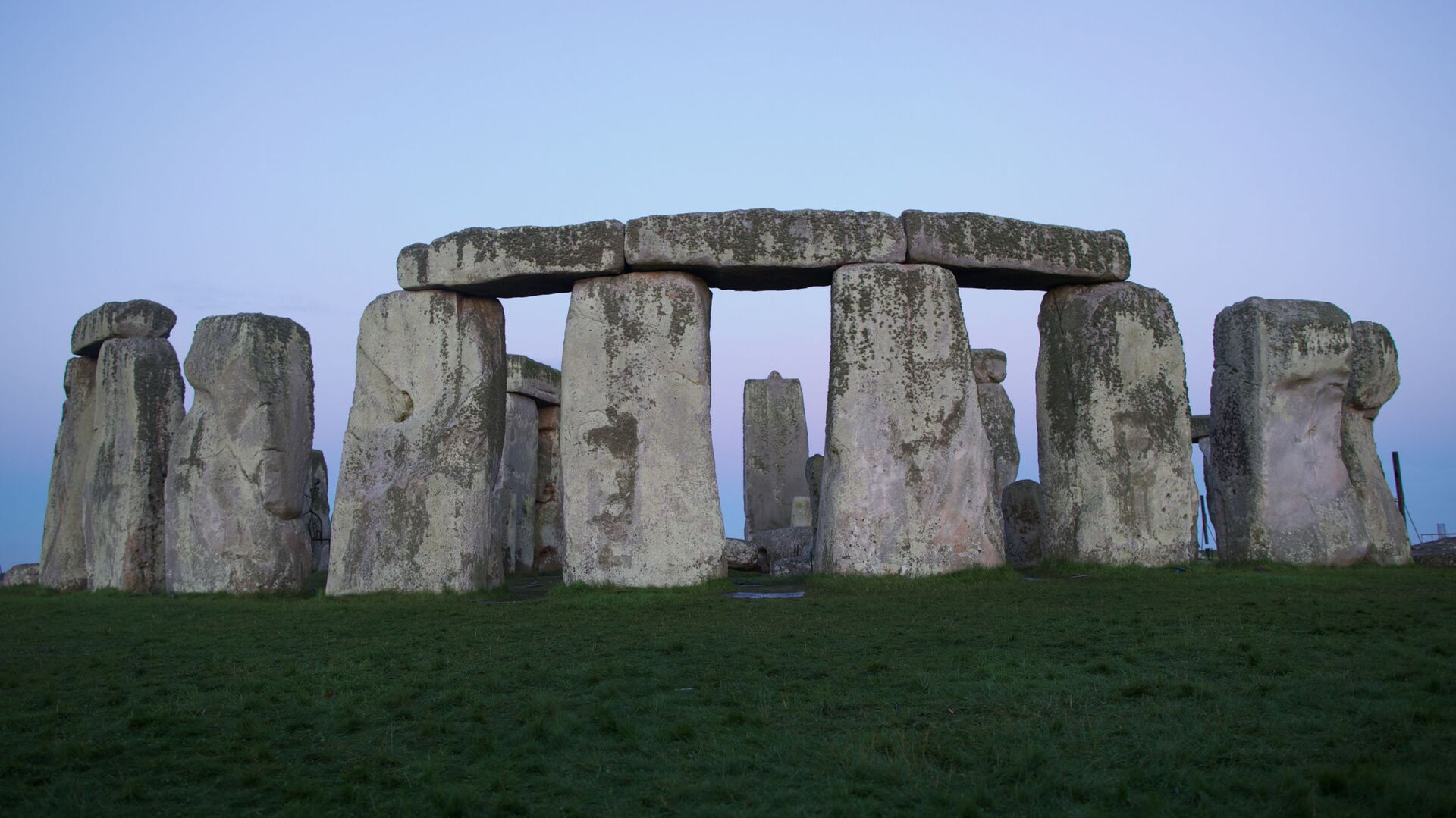https://sputnikglobe.com/20211124/millennia-old-pits-surrounding-ancient-site-near-stonehenge-dug-by-humans--media-1090996412.html
Millennia-Old Pits Surrounding Ancient Site Near Stonehenge Dug by Humans – Media
Millennia-Old Pits Surrounding Ancient Site Near Stonehenge Dug by Humans – Media
Sputnik International
The pits are arranged in a circle about 2 kilometres in diameter, with the ancient site known as Durrington Walls situated in its centre. 24.11.2021, Sputnik International
2021-11-24T18:47+0000
2021-11-24T18:47+0000
2021-11-24T18:47+0000
united kingdom (uk)
science & tech
study
pit
stonehenge
https://cdn1.img.sputnikglobe.com/img/106803/17/1068031774_0:251:2751:1798_1920x0_80_0_0_1f7377fd6010437fe427a61461704973.jpg
A series of deep ancient pits located in the vicinity of Stonehenge appears to be the work of humans, despite archaeologists initially believing they had formed naturally, The Guardian reports.The pits are aligned in a circle about 2 kilometres in diameter with Durrington Walls, which the newspaper calls "one of Britain’s largest henge monuments," located in the centre. The site is situated about 1.9 miles northeast of Stonehenge.Professor Vincent Gaffney of Bradford University who headed the team that made the discovery noted that part of the circle did not survive, and that analysis of nine of the pits was conducted during the latest fieldwork.The pits were dug about 4,500 years ago, with each being about 10 metres wide and 5 metres deep, the newspaper notes, adding that “science supports the theory” that they were likely dug by Stonehenge’s Neolithic builders.The study of the pits involved the use of optically stimulated luminescence (OSL), which dates the last time sediment was exposed to sunlight. Dr. Tim Kinnaird from the School of Earth and Environmental Sciences at the University of St Andrews, the person who conducted the tests, said: "These proved beyond doubt that the pits date to around 2,400 BC."Kinnaird also noted that the pits are "all very similar, which is fascinating," with the newspaper pointing out that the pits would’ve been of different sizes if they were natural features.Gaffney also said that the pits were in use from the late Neolithic until the middle Bronze Age, adding that "these things are being maintained beyond the monumental phases of Stonehenge."The newspaper also writes that while Stonehenge was "positioned in relation to the solstices, the boundary of pits may have had cosmological significance."
https://sputnikglobe.com/20210423/artefacts-found-in-grave-near-stonehenge-may-hint-at-sites-true-nature-media-says-1082710251.html
united kingdom (uk)
Sputnik International
feedback@sputniknews.com
+74956456601
MIA „Rosiya Segodnya“
2021
News
en_EN
Sputnik International
feedback@sputniknews.com
+74956456601
MIA „Rosiya Segodnya“
Sputnik International
feedback@sputniknews.com
+74956456601
MIA „Rosiya Segodnya“
united kingdom (uk), science & tech, study, pit, stonehenge
united kingdom (uk), science & tech, study, pit, stonehenge
Millennia-Old Pits Surrounding Ancient Site Near Stonehenge Dug by Humans – Media
The pits are arranged in a circle about 2 kilometres in diameter, with the ancient site known as Durrington Walls situated in its centre.
A series of deep ancient pits located in the vicinity of Stonehenge appears to be the work of humans, despite archaeologists initially believing they had formed naturally, The Guardian reports.
The pits are aligned in a circle about 2 kilometres in diameter with Durrington Walls, which the newspaper calls "one of Britain’s largest henge monuments," located in the centre. The site is situated about 1.9 miles northeast of Stonehenge.
Professor Vincent Gaffney of Bradford University who headed the team that made the discovery noted that part of the circle did not survive, and that analysis of nine of the pits was conducted during the latest fieldwork.
"We’ve now looked at nearly half of them and they’re all the same. So effectively this really does say this is one enormous structure," Gaffney said. "It may have evolved from a natural feature, but we haven’t located that. So it’s the largest prehistoric structure found in Britain."
The pits were dug about 4,500 years ago, with each being about 10 metres wide and 5 metres deep, the newspaper notes, adding that “science supports the theory” that they were likely dug by Stonehenge’s Neolithic builders.
The study of the pits involved the use of optically stimulated luminescence (OSL), which dates the last time sediment was exposed to sunlight. Dr. Tim Kinnaird from the School of Earth and Environmental Sciences at the University of St Andrews, the person who conducted the tests, said: "These proved beyond doubt that the pits date to around 2,400 BC."
Kinnaird also noted that the pits are "all very similar, which is fascinating," with the newspaper pointing out that the pits would’ve been of different sizes if they were natural features.
"There’s a real revolution in dating technology happening with OSL. You date the sediments directly. Traditional dating relies on us finding a bit of bone or charcoal and then we date that," Gaffney remarked. "We don’t date the soil. OSL does that."
Gaffney also said that the pits were in use from the late Neolithic until the middle Bronze Age, adding that "these things are being maintained beyond the monumental phases of Stonehenge."
The newspaper also writes that while Stonehenge was "positioned in relation to the solstices, the boundary of pits may have had cosmological significance."




